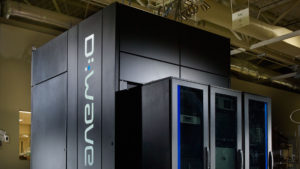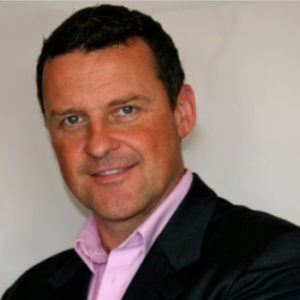While it is not clear the shape that next generation computing will ultimately take at the enterprise level, it seems likely that the computer systems that will be available to business in the future will likely combine different aspects of the technologies currently emerging, such as quantum computing, machine learning and artificial intelligence.

Quantum computing works best as a complement to classical computers. It will most likely be used for specific challenges a classical computer can’t solve rather than entirely replacing the computers we use today, Jeremy Hilton, D-Wave Systems
Future glimpse
Glimpses of this can be gleaned today by looking at IBM’s Watson. Initially developed to demonstrate the practicality of a machine processing unstructured data, Watson has since been made available via the cloud to anyone interested in using it.
Watson made its public debut when it competed in the quiz show Jeopardy! in the US in 2011, taking first prize and beating two human previous champions in the process.
“In our world today data in all its forms is expanding as a resource to be utilised. For many industries and professions, this data explosion is outstripping the human capacity to understand the meaning hidden within that data and big data has been called a new natural resource,” said Robert McCarthy, innovation program director for IBM Ireland Lab.
“And this resource continues to rapidly grow in volume, variety and complexity.”
As an example, McCarthy points to the healthcare sector, where cataloguing the human genome of just one cancer patient creates the equivalent of half a terabyte of data, and despite the explosive growth of information across the globe, less than one per cent of the world’s data is currently being analysed.
To try to deal with this explosion of data, IBM developed the Watson super computer, a technology platform that uses natural language processing and machine learning to reveal insights from large amounts of unstructured data.

Converting the Nyquist rate to fully capture signals is theoretically what as an industry we’ve been doing — fully converting all of the information in a given signal. You need to do that for things like audio or video but in an awful lot of cases you don’t need to convert the entire signal bandwidth, Donnacha O’Riordan Microelectronic Circuits Centre Ireland
Human-like
“Watson analyses high volumes of data and processes information more like a human than a computer — by understanding natural language, generating hypotheses based on evidence and learning as it goes,” said McCarthy.
Watson now powers new consumer and enterprise services in the health care, financial services, retail and education markets and IBM has opened the platform to developers and entrepreneurs, enabling them to bring to market their own powered-by-Watson applications for a variety of industries.
“We see that businesses and industries can use cognitive computing like Watson to help make sense of their data, they can make better operational decisions, understand customer wants and needs, communicate in real time and optimise their business processes — infused with this cognitive ability to understand, reason, and learn,” said McCarthy.
Difference
The crucial difference between IBM’s Watson platform and conventional data analytics technology is that traditional analytical systems struggle with ambiguity. They tend to be pre-programmed and rigid, unable to learn, reason, relate or interact in natural language.
“Cognitive-based systems such as Watson can build a knowledge base, understand natural language and provide confidence-weighted responses. They reason and interact more naturally with human beings,” said McCarthy.
“They can quickly find the proverbial needle in a haystack and can identify new patterns and insights — something particularly relevant in areas such as healthcare, transportation, retail or law.”






Subscribers 0
Fans 0
Followers 0
Followers